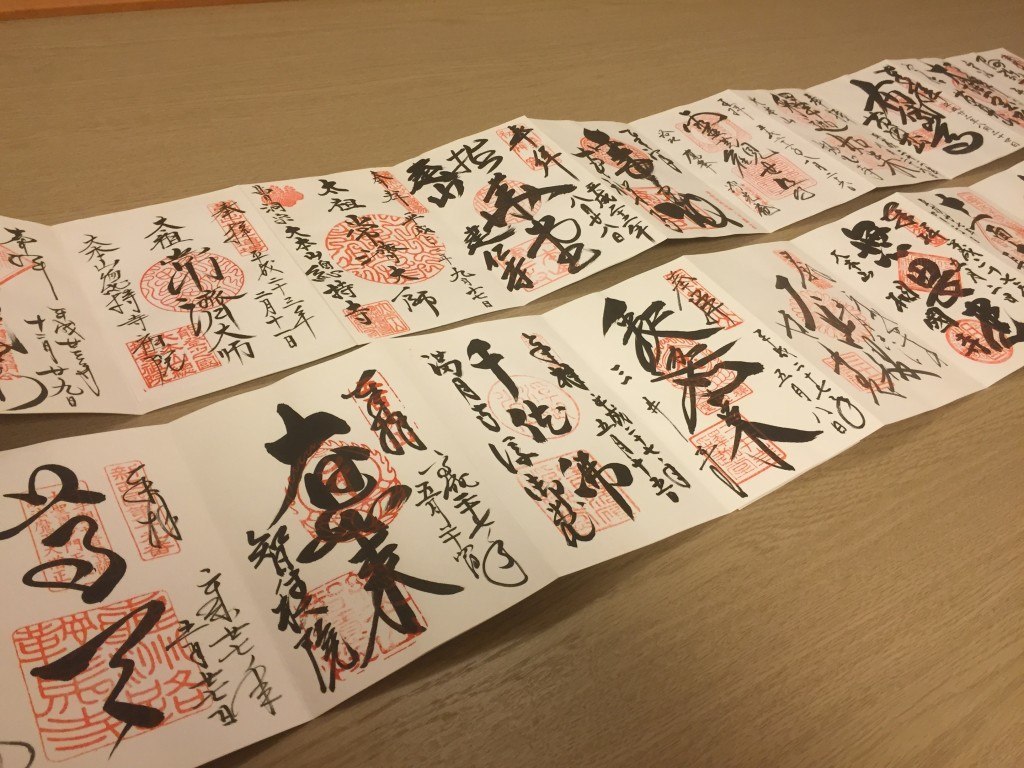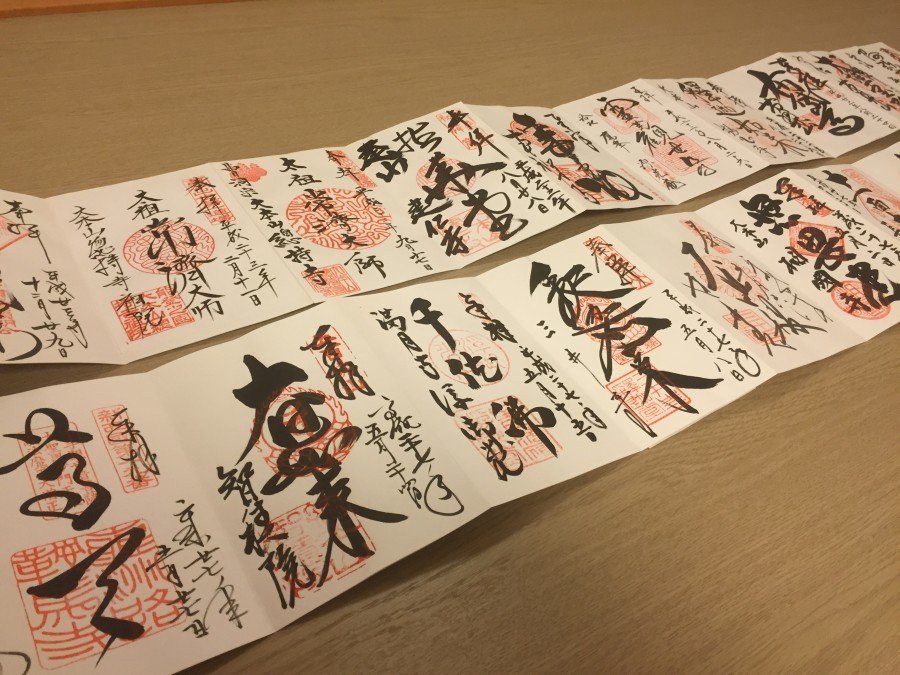Like this post? Help us by sharing it!
If you’re hoping to find a unique souvenir to buy in Japan, look no further! A temple stamp book is a great way to remember your trip.
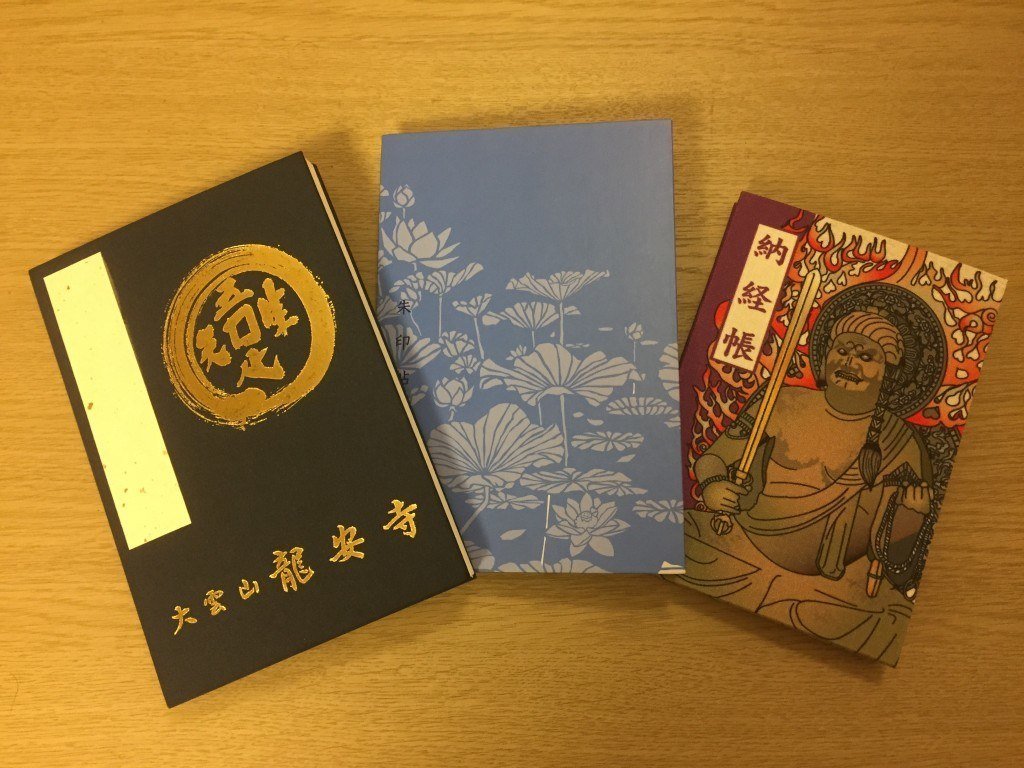
It’s pretty much impossible to have a holiday in Japan without stumbling into a Buddhist temple at some point during your trip. In fact, it’s a fair bet that you’ll visit quite a few, particularly if you spend some time in Kyoto, which has over 1,500 temples.
With so many souvenirs on offer at temples, choosing what to buy as a memento can be tricky, so I would like to recommend something which you can buy to remember all of the temples you visit on your trip, all contained within a single easily packable item!
Pictured above are goshuincho. The name literally means ‘Honourable Red Stamp Book’.
Temple stamp books have a long history in Japan, and there are a couple of theories regarding their origin. During the Edo period, travel around Japan was strictly regulated, and permission from the government (and of course a good reason!) was necessary before you could undertake a journey outside of your hometown or province. One exception to this rule was the ability to travel on a religious pilgrimage, but in order to go on such a pilgrimage, travellers would require evidence that they had actually visited the temples that they were intending to travel to, along with proof of the dates of their visit. Both of these requirements are met by what’s written and stamped into a goshincho, as we will see below. Another theory is that donors who provided money or other services to temples received a stamp in their book as a kind of receipt. It’s likely that the origin of the books was a combination of both of these theories.
Before you can start collecting your temple stamps, first you’re going to need to procure a temple stamp book! The books are available to purchase at pretty much every major temple in Japan, usually at the same place that you receive the stamp itself (more on finding that part of the temple below!). The book itself usually costs between 1,000 and 2,000yen. Major temples often have books with a cover design unique to that temple such as this one from Ryoan-ji in Kyoto:
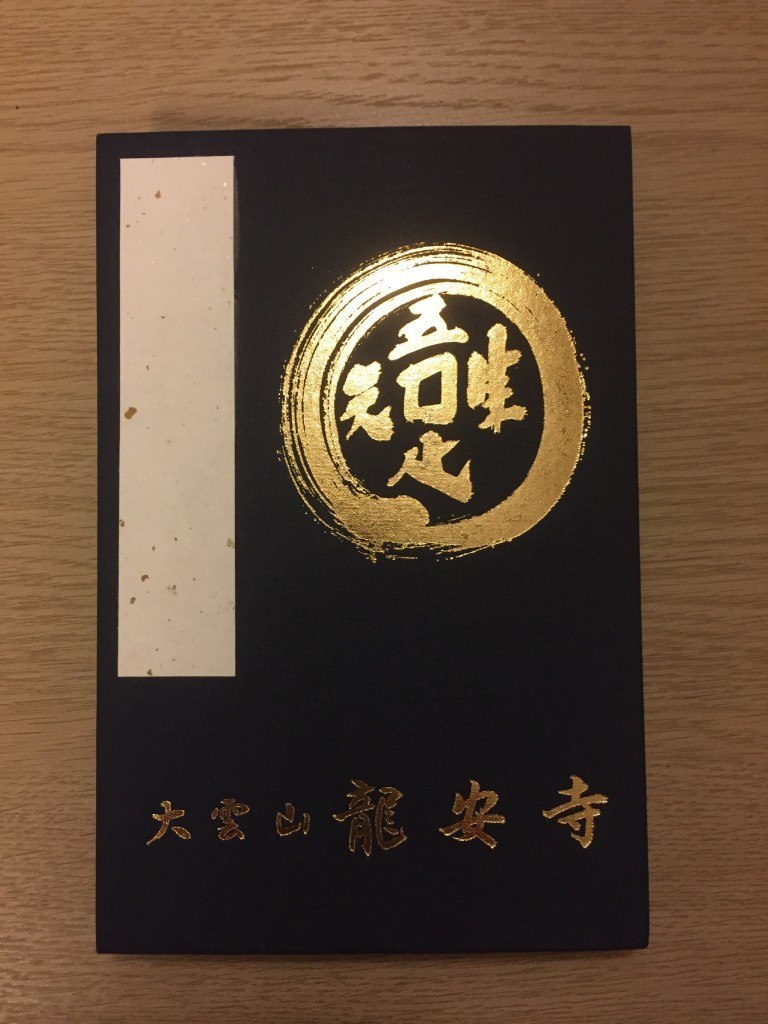
Ryoan-ji is most famous for its impressive rock garden, but the temple is also famous for a tsukubai water basin located just off the veranda on the other side of the building from the main garden. The characters on the basin (when read in conjunction with the square shape in the middle which completes each character) say ‘I only know satisfaction’. The meaning is that one already has everything one needs. The fact that the shape of the basin resembles an old-style Chinese coin is a clever contrast between the asceticism of the inscribed phrase and the materialism represented by its physical aspect. This stone basin is represented on the front of the temple stamp book that I bought at Ryoan-ji.
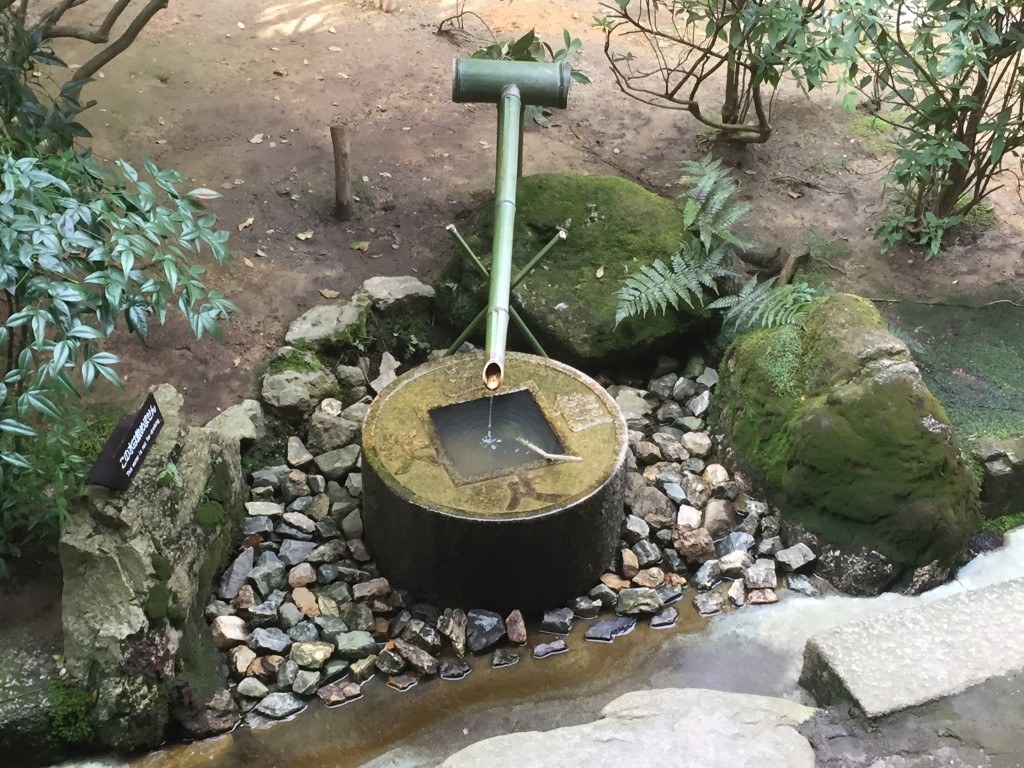
Now let’s take a look inside the stamp book and see what it involves! Here are two representative pages from my book:
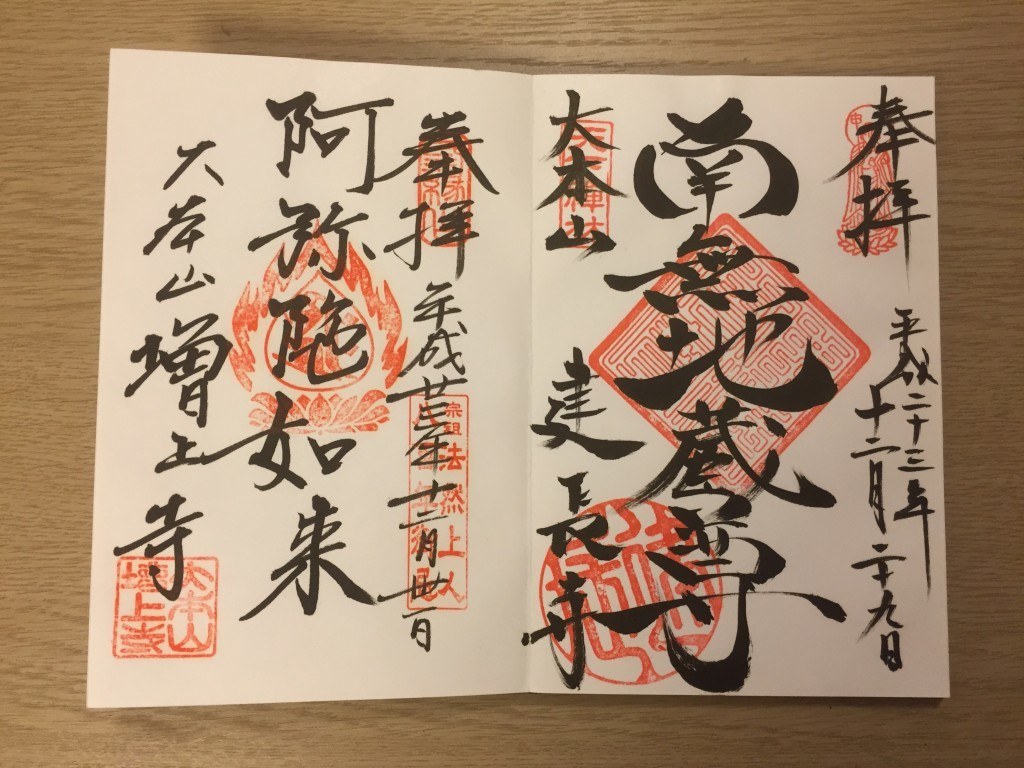
As it’s a traditional Japanese document, the stamps start at what we would consider to be the back of the book, The book is read from right to left, and opens up concertina style. Most books will contain enough pages for around 20 to 30 stamps. The stamp on the right is from Kencho-ji, a Zen temple in Kamakura, and the stamp on the left is from Zojo-ji, a Pure Land temple in Tokyo.
The contents of the page consist of the red stamps themselves, plus black calligraphy that is brushed over the stamps. First, let’s look at the calligraphy and what it means.
Although the jumble of characters looks chaotic, pretty much all temple stamps follow a set system, with 4 (or sometimes 5) sections, which usually appear in the same order. The stamp from Kencho-ji makes a good example:
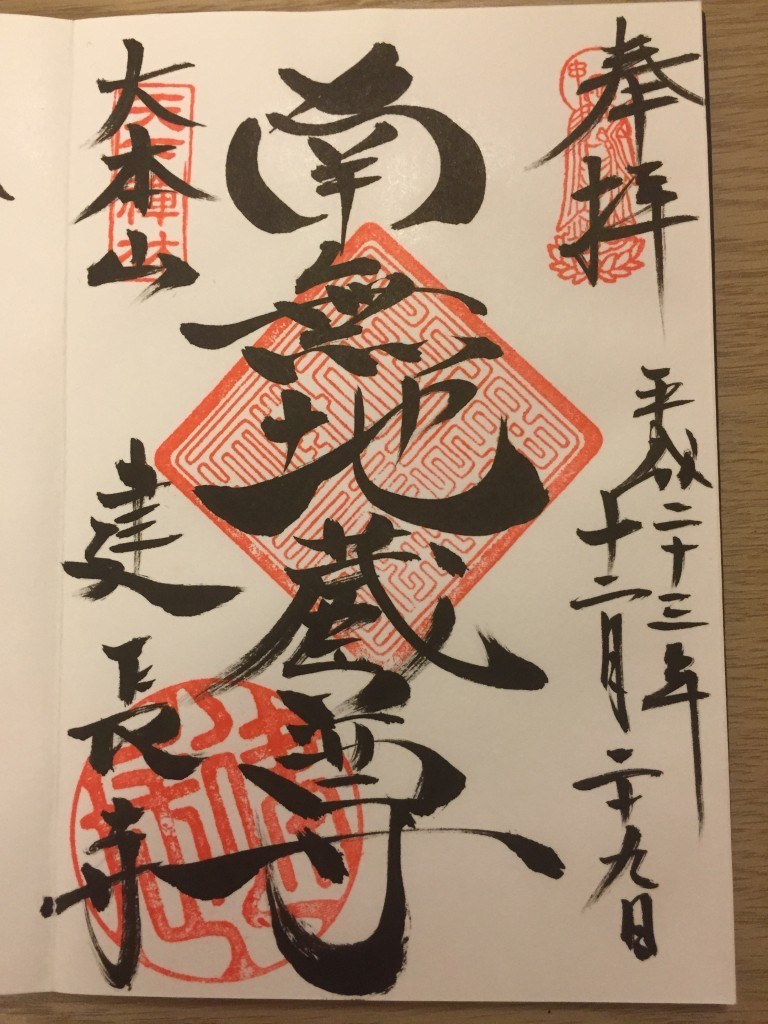
The characters in the top right hand corner will appear on every stamp that you get. They say 奉拝, which means ‘worship’ or ‘pray respectfully’. Directly underneath that going down the right hand side of the page is the date, 平成二十三年十二月二十九日, which means ‘Year 23 of the Heisei Era (2011), December 29th’.
The big characters that run down the centre of the page always refer to something specific to the temple, usually the principle deity that’s enshrined there. In Kencho-ji’s case the characters read 南無地蔵尊, ‘Hail to Jizo Bodhisattva’. A bodhisattva is a being ranked just below a Buddha. Bodhisattvas have postponed their own enlightenment until they have aided all other beings in attaining enlightenment before them. Very selfless! Jizo Bodhisattva is principally in charge of helping and protecting travellers, expectant mothers and children.
Moving over to the top left hand side of the page is the only section that might not always appear, which is the ranking of the temple. In the case of Kencho-ji it reads 大本山, ‘Great Origin Mountain’, the highest temple ranking that there is. This signifies that Kencho-ji is the head temple of its branch of Buddhism. Various other rankings exist, but for smaller temples without a specific ranking this section may be left blank. The final section in the lower left hand corner is the name of the temple, in this case 建長寺, Kencho-ji.
Of course, the page would not be complete without the bright vermillion stamps themselves. The number and form of the stamps varies from temple to temple. There will usually be at least 2 stamps, but sometimes as many as 6. The smaller stamps are usually specific to each temple, but you may be able to spot some commonality with the centre stamps, which are usually the same (or very similar) throughout a specific school of Buddhism. For instance, both of these stamps are from temples belonging to the Soto Zen school of Buddhism:
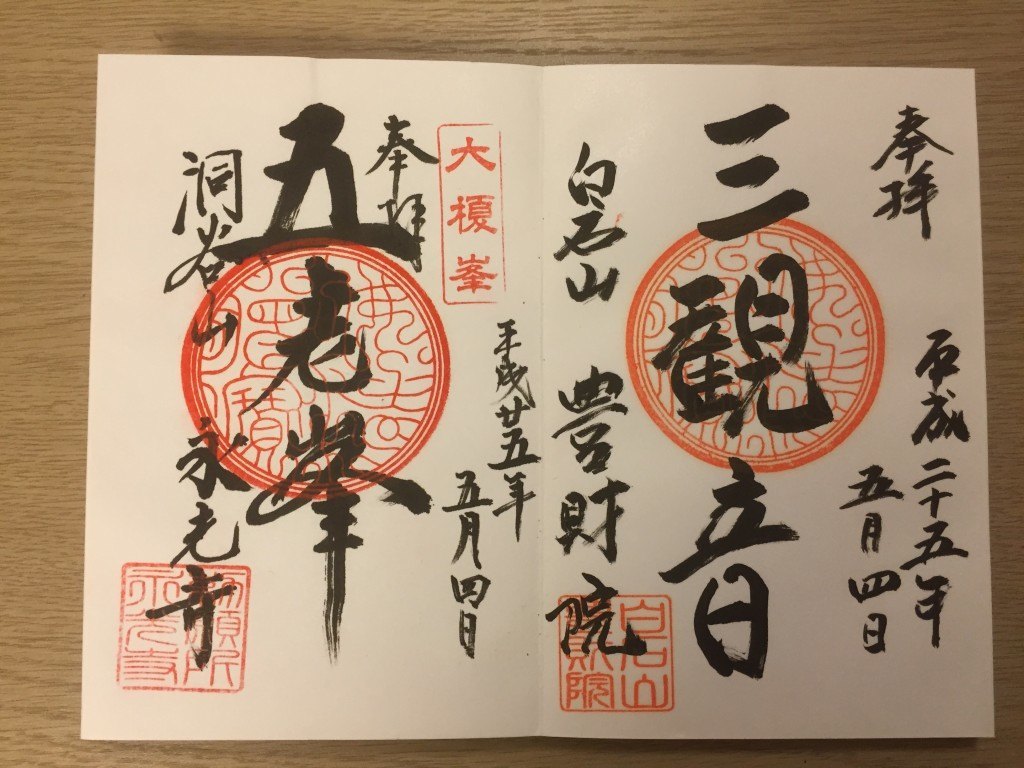
Some temples in Japan have been closely connected with the imperial family throughout the centuries. In such cases, the stamp may include the imperial family’s chrysanthemum crest, such as in this stamp from Ninna-ji in Kyoto:
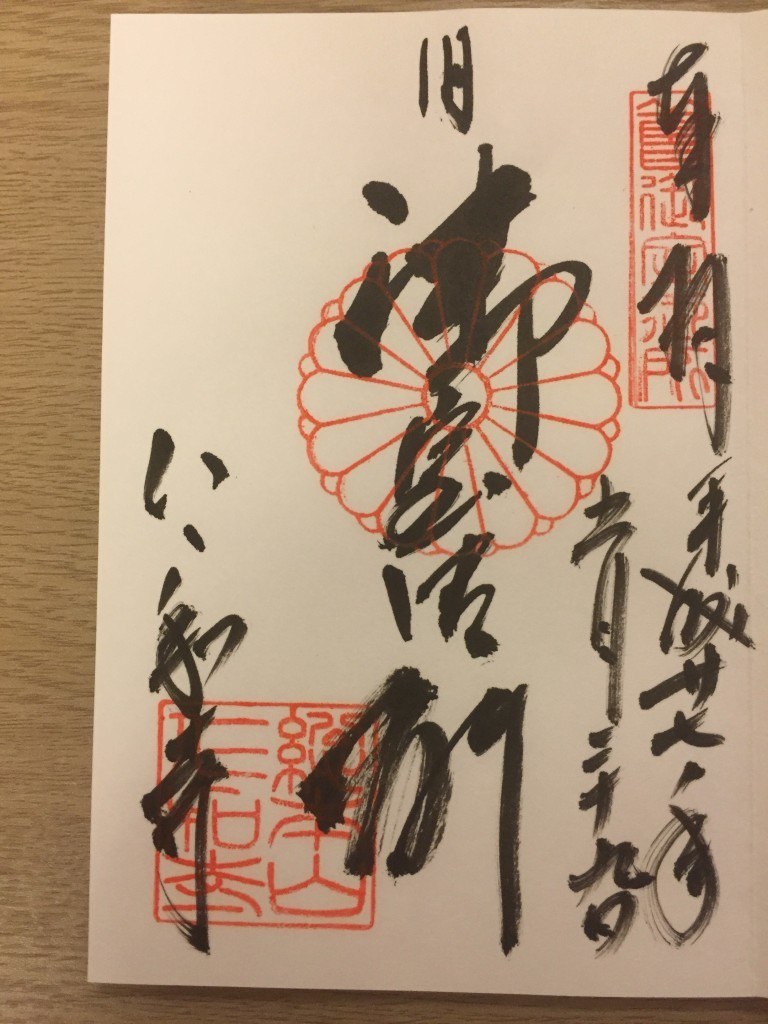
Now you know all about temple stamps, you’re ready to start your collection! The books are usually available to purchase at the same place (or next to) where you get the stamp itself. Look out for signs pointing towards any of the following: 御朱印所, ご朱印所, or 朱印所. If you can’t seem to find the right place, temple staff will usually be happy to point out where you need to go if you flash your book at them and ask for ‘goshuin’.
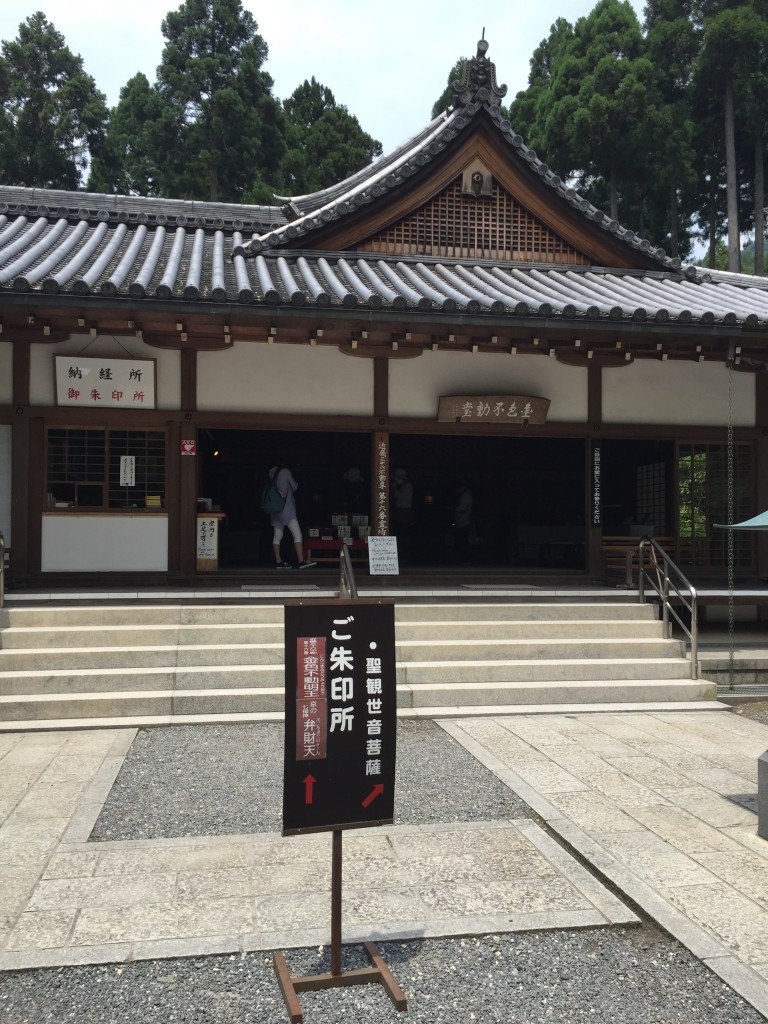
Most large temples will have their temple stamping booth somewhere in the inner temple complex, but at some smaller temples it’s done at the same place as where you buy your entrance ticket. All but the smallest temples offer temple stamps. There’s a fairly universal fixed fee of 300yen per stamp across Japan. It’s pretty rare to come across a temple that charges more. Some temples offer a choice of different stamps (usually this is the case when the temple enshrines multiple deities), in which case you can choose which one you want from the examples on display.
After handing over your book and paying your 300yen, the attendant will get to work creating your stamp. Usually they will apply the red stamps first and then brush the calligraphy over it, but some temples do it in the opposite order. At many temples they will do the stamping and calligraphy in front of you while you wait, but some temples will give you a numbered ticket for you to keep while you look around the temple. Once you’re done, you give the ticket back and they will return your stamped book to you. I personally prefer being able to watch it being done. I find watching the calm and precisely executed brush strokes of the attendant almost as calming as sitting in front of the temple’s garden! Here is a stamp being prepared for me at Nara’s Todai-ji temple:
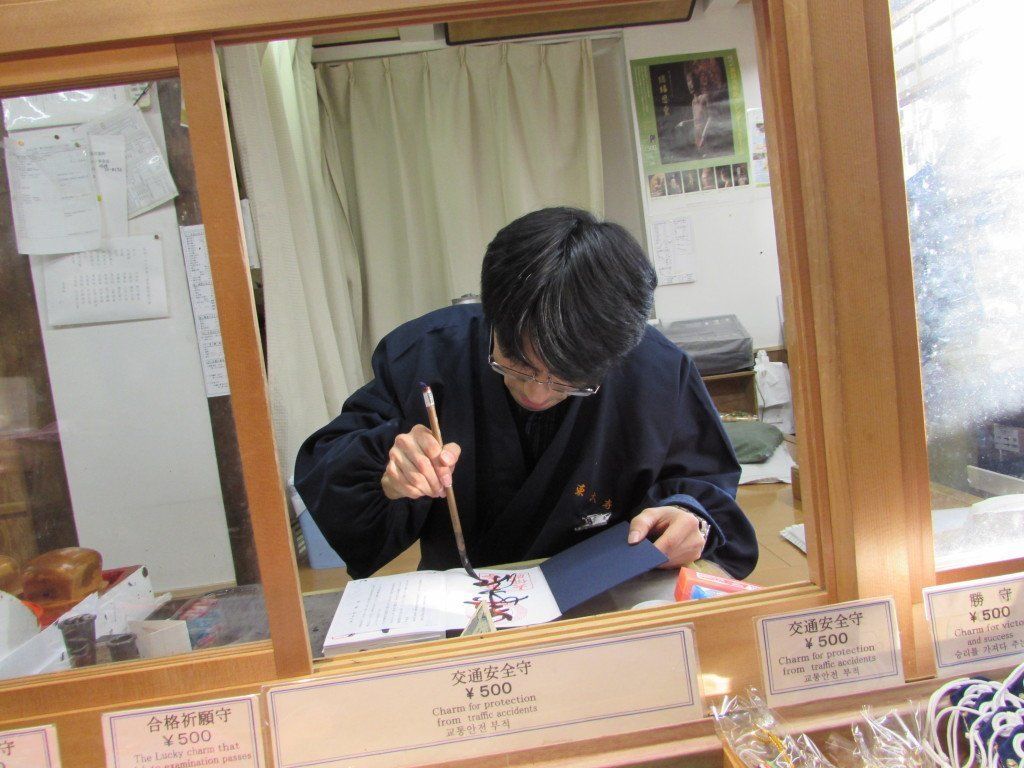
The red ink used for the stamps and the black India ink used for the brushwork can take a little while to fully dry. In order to prevent the ink staining other pages in your book, the attendant will insert a slip of blotting paper before closing your book and handing it back to you. Usually this will just be a scrap of newspaper, but some temples have their own custom made blotting paper, such as this example from Eikan-do temple in Kyoto:
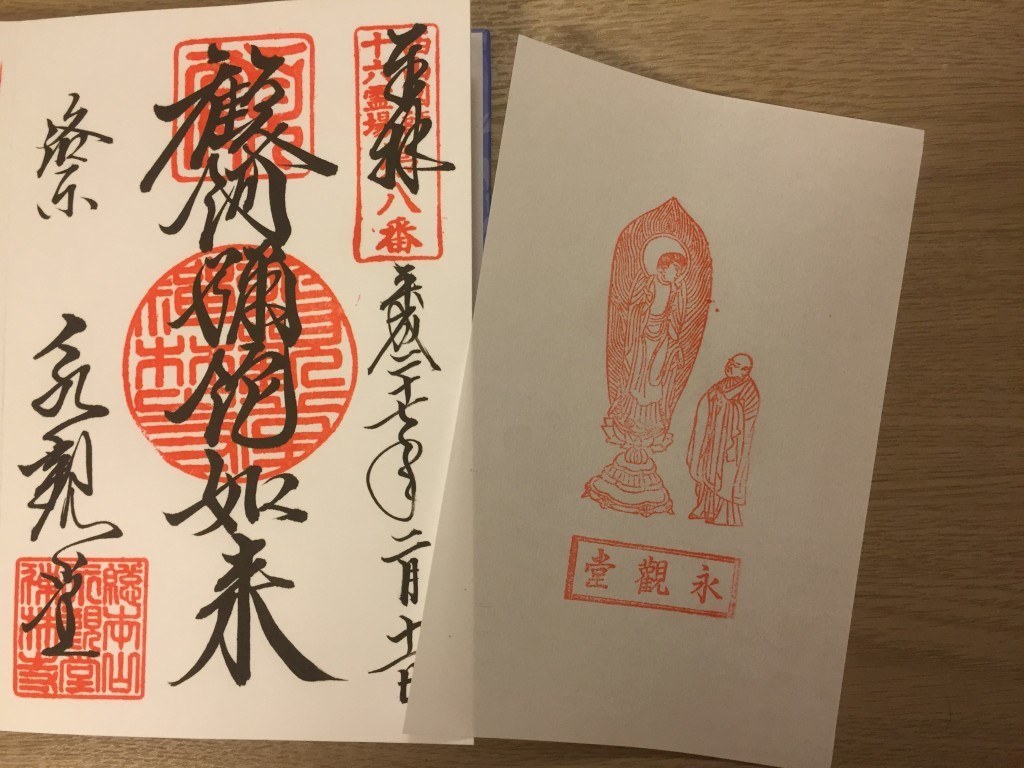
Eikan-do is famous for its statue of Amida Buddha with his head turned to the side. Supposedly the statue’s head was originally facing forward, but one day as the monk Eikan was leading a chanting ceremony in the main hall, the statue came to life and stepped down from the platform. Eikan stopped chanting in surprise, and Amida Buddha looked back at him over his shoulder and admonished him to keep up. Since then the statue has remained in that position. Eikan-do’s blotting paper displays this episode. A nice touch!
If you get a stamp from Kinkaku-ji, Kyoto’s famous Golden Pavilion temple, look out for their rather unique (and modern!) way of making sure the ink doesn’t run. After completing the brushwork, they whip out a hairdryer and give the page a quick blow dry! They still include a slip of blotting paper, just in case!
A temple stamp book is a great way to remember the temples that you’ve visited, and you can’t get anything quite like it anywhere else in the world. Unless you work yourself into a temple-hopping frenzy, you’re unlikely to completely fill your book in one holiday, but returning home with some spare pages is a great excuse to start planning your next trip! Happy stamping!
